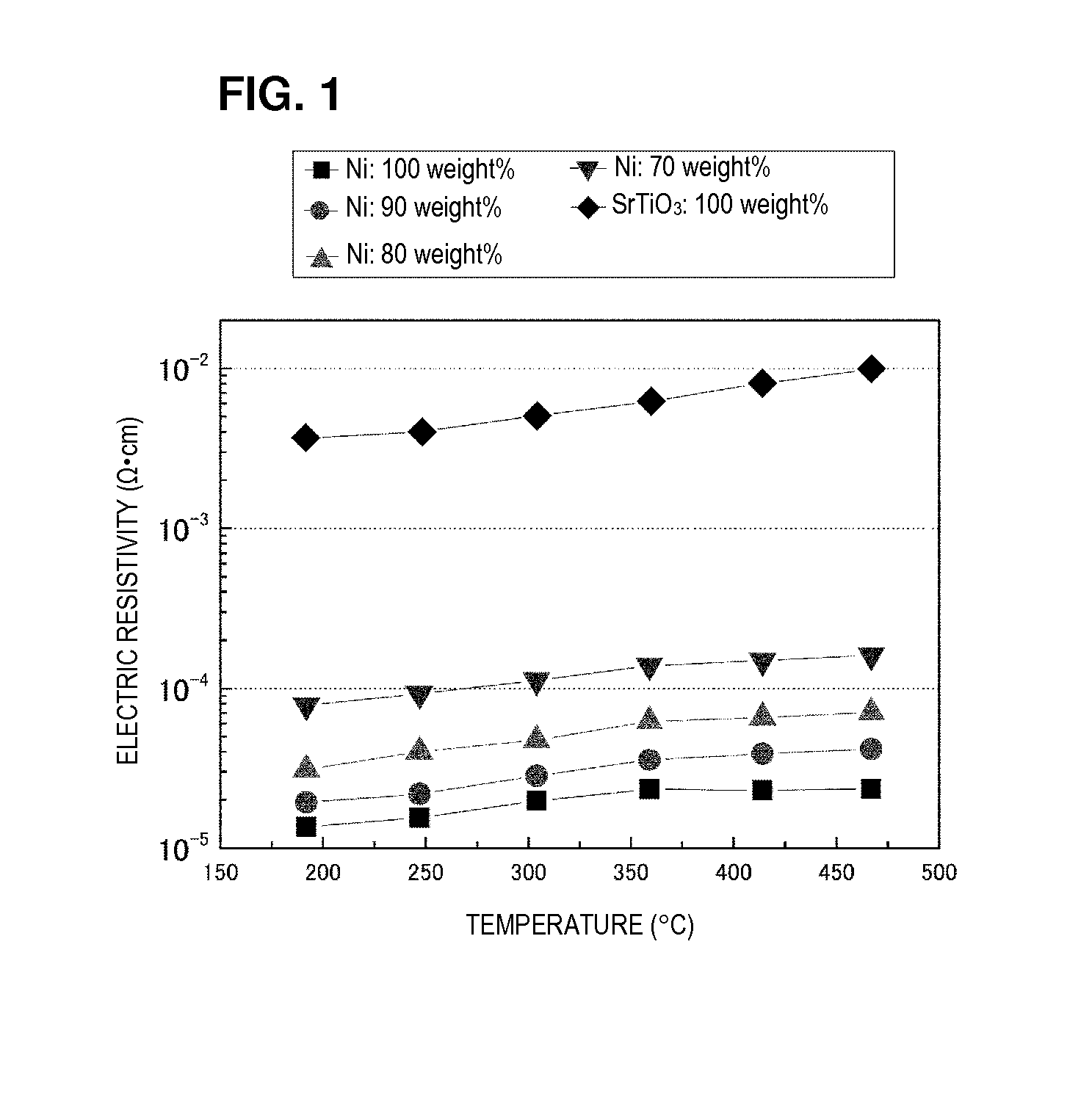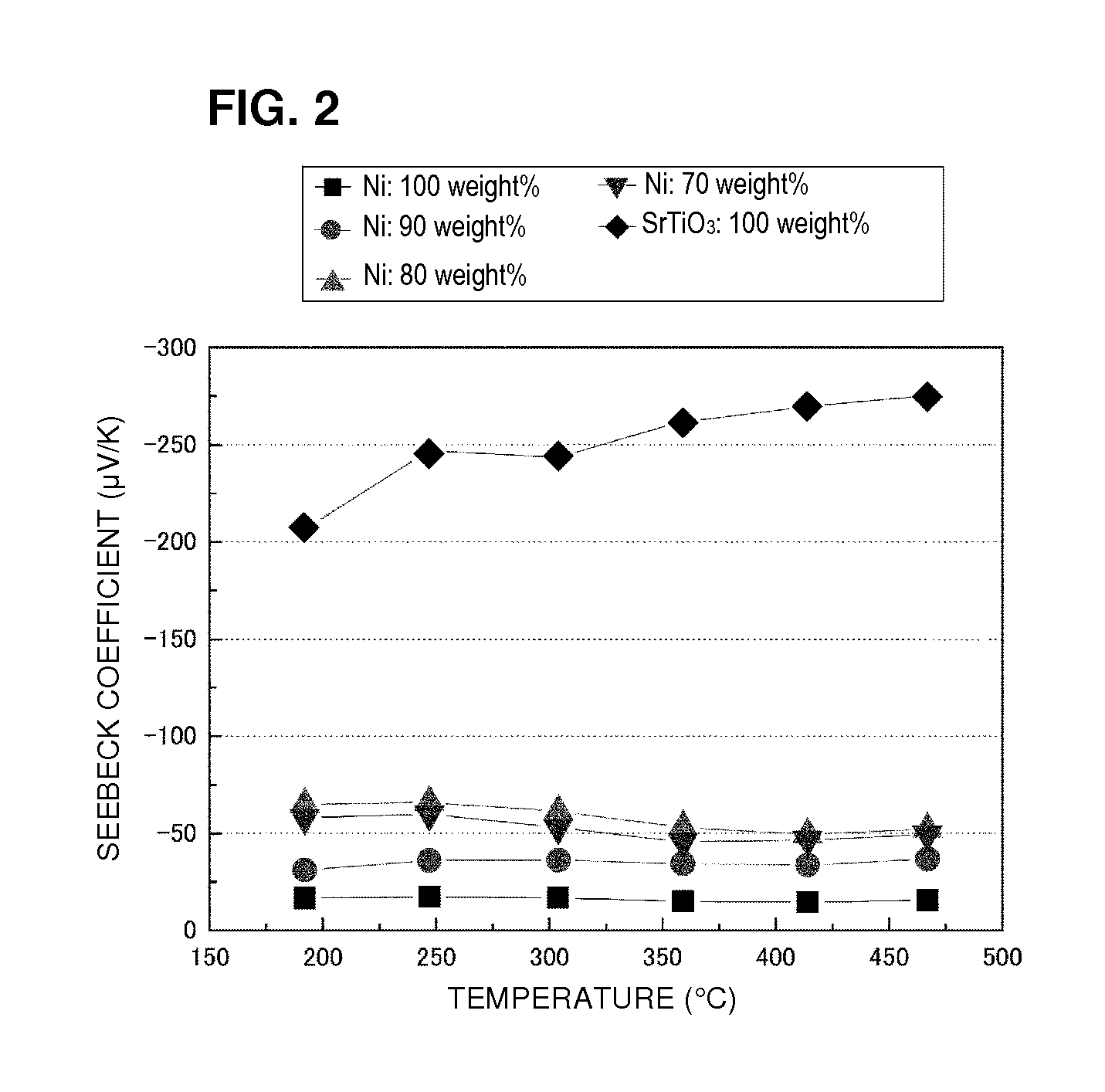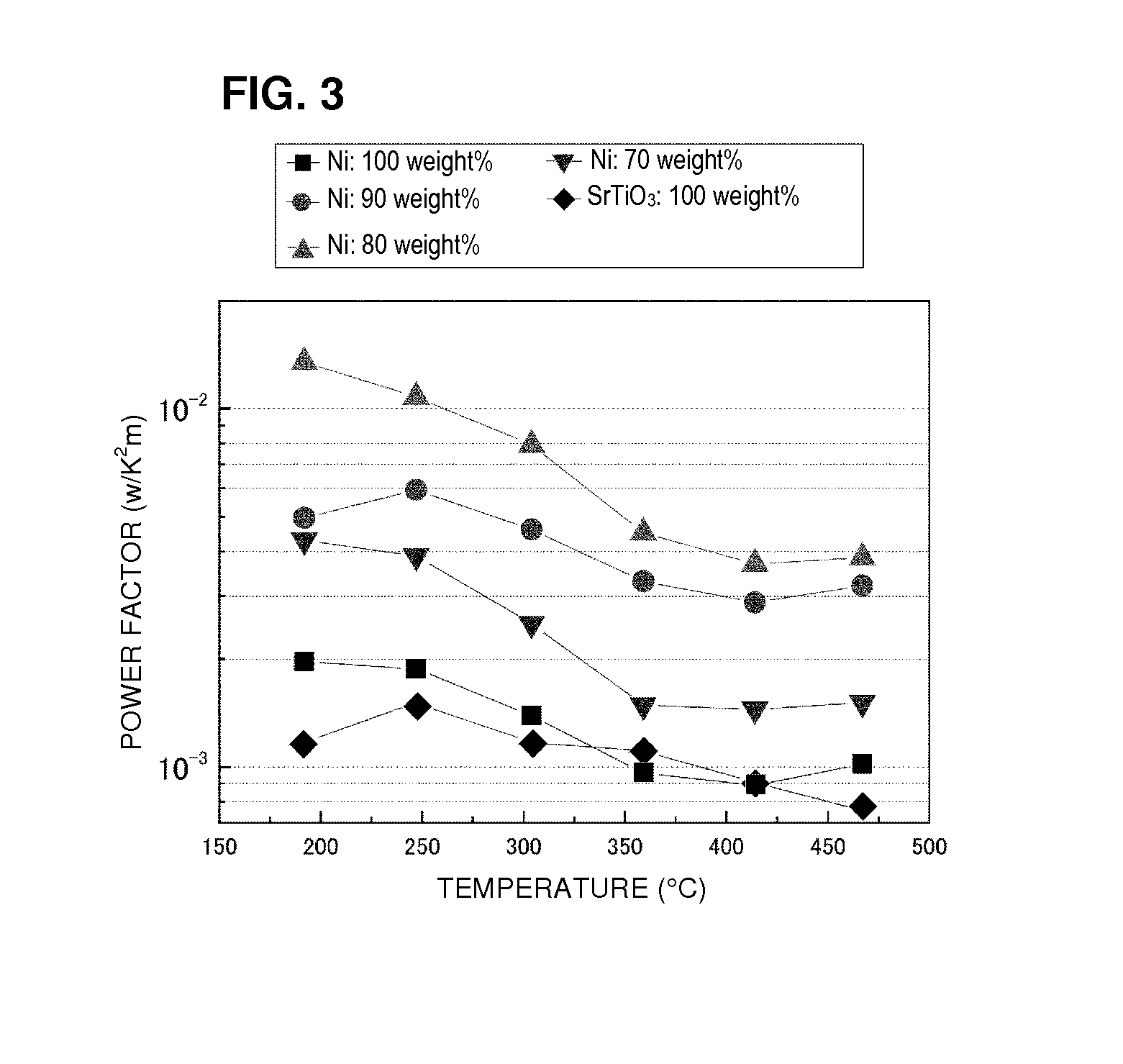Thermoelectric conversion material and method for producing thermoelectric conversion material
a technology of thermoelectric conversion material and conversion material, which is applied in the direction of heat exchange elements, thermoelectric device junction materials, chemistry apparatus and processes, etc., can solve the problems of energy loss, desirably smaller electric resistivity , etc., and achieves reduced electric resistance, large power factor, and increase the seebeck coefficient
- Summary
- Abstract
- Description
- Claims
- Application Information
AI Technical Summary
Benefits of technology
Problems solved by technology
Method used
Image
Examples
first preferred embodiment
[0028]According to a non-limiting example of a first preferred embodiment of the present invention, as an oxide material, a SrTiO3 based oxide material was prepared by the following method.
[0029]First, respective powders of SrCO3, TiO2, La2O3, CeO2, Dy2O3, and Er2O3 were prepared as starting raw materials for the SrTiO3 based oxide material.
[0030]Then, these starting raw material powders were weighed so as to provide the compositions in Table 1. Then, the respective starting raw material powders and pure water as a solvent were combined, and subjected to mixing for 16 hours in a ball mill to obtain slurry. Next, the obtained slurry was dried, and then subjected to calcination under the condition of 1300° C. in the atmosphere.
[0031]Then, the calcined powder obtained was subjected to grinding and mixing with the use of a ball mill for 4 hours with ethanol as a solvent. Next, the slurry obtained by carrying out the grinding and mixing was mixed with the addition of organic constituents...
PUM
| Property | Measurement | Unit |
|---|---|---|
| Seebeck coefficient | aaaaa | aaaaa |
| Seebeck coefficient | aaaaa | aaaaa |
| pressure | aaaaa | aaaaa |
Abstract
Description
Claims
Application Information
 Login to View More
Login to View More - R&D
- Intellectual Property
- Life Sciences
- Materials
- Tech Scout
- Unparalleled Data Quality
- Higher Quality Content
- 60% Fewer Hallucinations
Browse by: Latest US Patents, China's latest patents, Technical Efficacy Thesaurus, Application Domain, Technology Topic, Popular Technical Reports.
© 2025 PatSnap. All rights reserved.Legal|Privacy policy|Modern Slavery Act Transparency Statement|Sitemap|About US| Contact US: help@patsnap.com



